

Discover more from Fast Women
The Growing Visibility of Autistic Women in Running
Autistic women have been chronically underdiagnosed, but they've been part of the running community for years.
Heather McKirdy loves running, but there are certain parts of it that can be tough for her to handle. Like wind. One time several years ago, she got out of her car for a run, she was hit in the face with a gust of cold wind, and she burst into tears. She was confused by her reaction. “That’s weird to admit to someone—the wind can make me cry,” she told Fast Women.
But last year, at age 38, she learned that she was autistic, and many aspects of her life began to make sense. She now knows that she’s very sensitive to sensory input, which can make a windy run tough.
Autism is a neurodevelopmental difference that affects how people think, communicate, move, process information, and perceive the world. McKirdy’s experience of being diagnosed as an adult is common for women; one study estimated that 80 percent of autistic women remain undiagnosed at age 18.
For McKirdy, getting a diagnosis was life-changing. “I’m so grateful for the chain of events that allowed me to figure out what was going on,” she said. “The diagnosis saved my life.”
Autistic women have long been a part of the running community, at all levels. But as awareness increases and more women are diagnosed, they’re becoming more visible, thanks in part to social media. Fast Women spoke to five runners about their experiences learning they were autistic, why running has been a good fit for them, and the ways in which the running community could be more inclusive.
The dangers of misdiagnosis
McKirdy, a running coach and 17:59 5K runner who is based in Flagstaff, Arizona, had never thought about autism much until the summer of 2022. An old friend, who is a psychiatric nurse practitioner, began talking about an influx of self-diagnosed autistic people who were showing up at her practice. It led McKirdy to do some googling, and the results were eye-opening.
“I was like, ‘Oh shit, autism is not at all what I thought it was,’” she said. “And I’ve been diagnosed with just about everything in the book and none of those diagnoses ever made perfect sense. But reading about autistic people, I was like, ‘This is 100 percent me.’”
The previous year, McKirdy had what she now recognizes was an autistic meltdown—a response to an overwhelming situation—that led to her being hospitalized. Though she had experienced them throughout her life, she had never had one in front of her husband before, and it scared him enough that he called emergency services. She was put on a psychiatric hold for almost 72 hours and prescribed antipsychotics.
“For people who need [antipsychotics], they’re a lifesaver, but being medicated for the wrong things, I could have suffered really severe consequences,” McKirdy said. “If we hadn’t figured out what was happening, it likely would have meant more hospitalizations, more medications, and more intensive psychiatric care.”
After sitting on the idea for a couple of months, she decided to find out if her hunch that she was autistic was correct. McKirdy found a doctor in California to do an assessment. It wasn’t covered by insurance.
Getting an autism diagnosis can be very expensive and involve long waitlists. McKirdy feels very fortunate that she was able to get the time off and could afford the travel and the appointments. “It’s absolutely ridiculous to me that that’s sometimes what’s necessary in this country,” she said. “There’s a huge barrier to access.”
McKirdy now talks about her experience in both serious and lighthearted ways, because she wants to help others who are struggling.
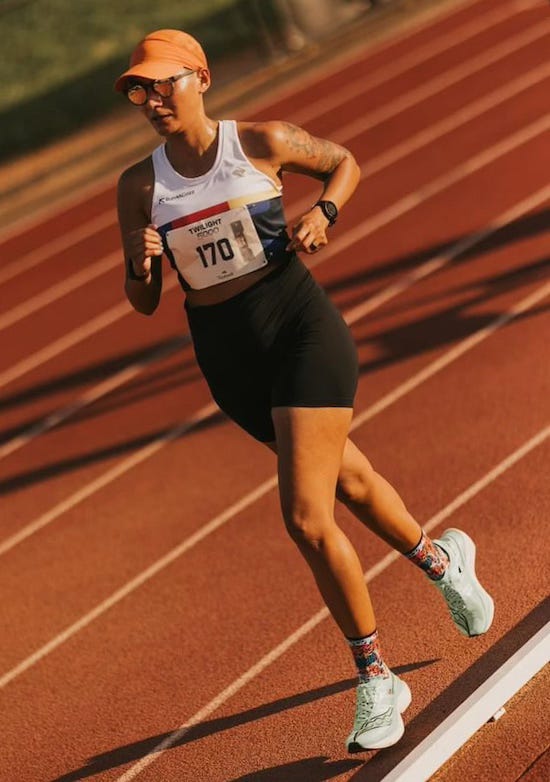
Women are often overlooked
Jazz Santiago-Tracey is a competitive runner based in Raleigh, North Carolina, who has raced everything from 600 meters up to 50 miles. When she was little, her mother saw a TV segment on autism and recognized enough of her daughter in it that she decided to consult a doctor. But the doctor was dismissive and told her she just had a shy kid. Earlier this year, at age 35, Santiago-Tracey was finally diagnosed with autism.
Women are more likely than men to go undiagnosed for a variety of reasons. Most of the screening tools have been developed based on research that tends to center male participants. Girls are more likely to be socialized to mask—consciously or unconsciously change their behavior to appear neurotypical and blend in socially.
Many girls are missed due to outdated ideas about what autism is and who can be autistic. Additionally, the diagnostic criteria have changed over time, so who is eligible for a diagnosis has also changed.
Of the five women who spoke to Fast Women about learning they were autistic, only one of them was diagnosed as a child. Sofia Latham, a 16:08 5K runner from London, England, was diagnosed when she was 3. But Latham, who is now 19, didn’t get an accompanying ADHD diagnosis until she was 16.
Santiago-Tracey now knows that she was relying heavily on masking, without even knowing what it was, to avoid social rejection. “I always felt like an alien,” she said. “I didn’t feel like I fit in anywhere. I knew that something was off, but I just couldn’t put my finger on it.” And the masking often came at a cost, leaving her completely exhausted.
Until recently, White children were also more likely to be diagnosed with autism, so as a Mexican, Puerto Rican, and Indigenous girl whose traits presented more internally, Santiago-Tracey was, statistically speaking, unlikely to get a timely diagnosis. When she decided to consult a professional and see if she qualified for a diagnosis, she made sure the practitioner was a person of color.
“I think it is a very different experience when you’re already part of a marginalized community and then you feel more marginalized because your brain works differently,” Santiago-Tracey said, noting that is why she has decided to be open about her experience. “I want other women of color to know we do exist and it’s okay that your brain works differently. Representation matters so greatly to me because for so much of my life, I’ve felt very alone.”
Because it can be so difficult to get a diagnosis, the autism community acknowledges that self diagnosis is valid. Bettina, a 3:06 marathoner who opted to go by only her first name here, is self diagnosed, despite initially being skeptical of self diagnosis. “A friend of mine brought up that she thinks she might be autistic and at first I was like, ‘From TikTok? Really?’ But then I started looking into it.”
Once she began researching it, Bettina, 26, found too much supporting evidence to ignore. She consulted journal articles and websites and spoke with a therapist. She thinks it will be helpful to get an official diagnosis in the future, but at the moment, especially as a law student, “making negative money,” the process sounds expensive and overwhelming to her.
Dr. Samantha Friedman, an assistant professor of applied psychology and autism researcher at the University of Edinburgh, says that the main benefits to having a formal diagnosis are validation and legal rights. The legal rights include accommodations at school and at work, but Friedman, who is neurodivergent herself, acknowledges, “Diagnosis is not a magical thing that unlocks all of the resources.”
Cait Chock, 38, is a former U.S. high school record holder in the 5,000m, and she didn’t realize she was autistic until she was an adult. Chock, who works as a comedian in Portland, Oregon, is self diagnosed. She has other diagnoses, and she doesn’t think having one more would make a big difference in how she goes about her life. Plus, she doesn’t have good health insurance. “I haven’t felt the need to add another official title to the resume, so to speak,” she wrote in a message to Fast Women.
But better understanding how her brain works has helped Chock navigate the world. “I’m a science freak, so I love having answers,” she wrote. “Even if it doesn’t ‘solve’ certain things, it helps me find a roadmap to survive.”
For some autistic women, running is a good fit
McKirdy began running about 15 years ago. It took a few runs, but she soon fell in love with the sport. “It’s the first thing where I ever felt like, ‘Oh this is me. I feel like me when I’m running,’” she said. “Nothing had ever given me that before.”
And though she didn’t have the language to describe it at the time, running soon became a focused interest for McKirdy as well. “I would spend time during breaks at work obsessively reading the Runner’s World forums and any articles I could get my hands on,” she said. “I started reading running blogs and following professional runners. I was a huge fan of the sport, and then I also enjoyed doing it myself.”
The diagnostic criteria for autism are written in a way that pathologizes many autistic traits. Yenn Purkis is one autistic advocate who has taken the time to rewrite some of the criteria in a more neurodiversity-affirming manner. So “highly restricted, fixated interests that are abnormal in intensity or focus” becomes “passionate engagement in a particular interest.”
Though focused interests can center on any topic, several of the women who spoke to Fast Women said that running became a focused interest for them. When Bettina began getting into ultrarunning, she went down a rabbit hole. “I was listening to podcasts about training science and learning about physiology, and I think that made me a better runner overall,” she said.
The diagnostic criteria for autism also include, “stereotyped or repetitive motor movements” which is more commonly known as stimming. Stimming is any repetitive movement or sound and it can be used to calm oneself, reduce stress, process information, express joy, reduce or gain sensory input, or similar. Examples include pacing, hand flapping, rocking, pencil tapping, nail biting, and humming. (As for the difference between stimming and fidgeting, it depends who you ask.) The women who spoke to Fast Women varied on whether they considered running to be a form of stimming for them, but regardless of how they classified it, they agreed that running helped them with self regulation.
Many autistic people are also good at sticking to a schedule and, Friedman points out, consistency can go a long way toward becoming a good runner. “There’s some overlap between autistic traits—especially framing autistic traits positively—and what makes a good runner and what might feel good about running,” she said.
Chock believes that her ability to stick to a routine is part of what helped her reach the level that she did in running, but she found that because she also has obsessive-compulsive disorder, she struggled to train sensibly. “That’s why it’s key to have a support network that you are open and honest with about how you tick,” she wrote. “And [it’s important to] let others help you. That was hard for me.”
Monotropism is an autistic-led theory that autistic people are really effective at focusing all of their attention on fewer things at any one time. In contrast, non-autistic people tend to be polytropic, which lends itself to having an easier time focusing on many things at once, or flipping from one topic to another. This could be why autistic people tend to be so good at digging deep into their focused interests, and Friedman points out that it could also be useful while training and racing.
“That flow state you often get into when you’re having a really good run, it’s an example of that attention being directed into one place,” she said. “I think the fact that running is a monotonous activity, a lot of autistic brains do quite well with that.”
Autistic people often have different communication styles compared to non-autistic people, and the impetus is usually on autistic people to learn non-autistic people’s social norms.
Most of the women who spoke with Fast Women said that for them, socializing within running is often easier for them than socializing outside of it. First, there’s a common interest and common language. Latham, who runs for the University of Birmingham, points out that not only does she bond with her teammates during workouts, but running provides them with a built-in topic of conversation. “The vocabulary of running that we all share makes it easier to communicate,” she said.
A lot of people, autistic or not, have a tough time making new friends as an adult, and McKirdy finds that running with people is a natural way to do that. Plus, Friedman points out, making eye contact is uncomfortable for some autistic people, and eye contact is not necessary or expected while running with someone.
Bettina found that during college, having a team meant having built-in friends, and she said that without them, she would have been much more lonely. “I always felt like they cared about me as a person and they accepted me,” she said. “It wasn’t just about performance. Sometimes I blurt out things that are really random, and they thought I was funny, instead of being like, ‘Oh, she’s weird.’ I think that was really helpful for my development as a person in general.”
Autistic runners face still face challenges
While running has some autism-friendly components, autistic runners often deal with a unique set of challenges, which vary from one person to the next. For one, in running, monotropism can have its drawbacks. It can help runners push themselves to incredible performances, but it can also lead them to ignore their body’s interoceptive signals, like pain, fatigue, hunger, and thirst.
Latham finds that she is incredibly driven to push herself. “But it’s a double-edged sword,” she said. “If my coach and I don’t keep a very close eye on my training load, I will overtrain massively and burn myself out.”
Bettina, who tends to be under-responsive to her body’s interoceptive signals, lost consciousness after races at times during high school. “It’s a blessing and a curse,” she said. “Because I think it makes me a better runner, but it also means that I don’t always take care of myself, and that can be unhealthy.”
She now knows to pay attention to the heart rate data on her watch if she feels even the slightest bit off. When her heart rate is higher than usual, it helps provide confirmation that she’s worn down.
The majority of autistic people process sensory information differently than non-autistic people do. A person can be hypersensitive or hyposensitive, or some combination of both when it comes to sounds, smells, sights, textures, tastes, and other sensory input. One example that comes up frequently in running is that loud, crowded expos and races can be overwhelming to some autistic people.
Santiago-Tracey attended a road race not long after getting her autism diagnosis, and the combination of the DJ playing loud music and the crowds began to feel overwhelming. “I wanted to run away and go home,” she said. But she had talked things through with her therapist in advance, and she had a plan to step away from the chaos, if need be. She and her husband found a quieter parking lot and they walked back and forth and talked until she felt better.
“I love running and I love being able to see friends, but it’s a lot to digest when you're overwhelmed and overstimulated and secretly trying to soldier through it,” she said. “But now I know I just need to walk away and have a quiet moment and get my mind right before I throw myself into the crowd.”
In addition to sometimes struggling with wind, McKirdy also struggles in cold weather. She has learned to overdress, by other people’s standards, and ignore anyone who gives her a hard time about it. Certain fabrics are also tough for her to handle. “It took me so long to find sports bras and shorts that didn’t make me want to just claw my skin off,” she said.
Bettina, on the other hand, generally has decreased sensitivity to sensory input, which she believes is generally easier to manage in running contexts, because it’s easier to seek out stimuli than it is to avoid them.
Autistic people are also more likely to have a variety of co-occurring conditions that can make running more challenging, including motor skill difficulties, joint hypermobility, and eating disorders. Latham previously struggled with her running form, because coordination, particularly in her arms, was a challenge for her. But doing running drills has helped. And Bettina deals with hypermobility, which she thinks has likely caused some of her running injuries.
Additionally, compared to autistic men, autistic women are more likely to have co-occurring mental health conditions. One study found that about 32 percent of autistic women are hospitalized for a psychiatric condition by age 25. And another found that autistic women are 13 times more likely to die by suicide compared to non-autistic women. But earlier identification of and appropriate support for autistic girls and women can make a difference. So can the general population being better informed, more accepting, and designing things with autistic people in mind.
Making racing and training more inclusive
For people with sensory hypersensitivities, some races are inherently more likely to be pleasant than others. Racing down a quiet path in the woods is very different than lining up with 50,000 people at a big-city marathon. And it’s only relatively recently that road races have begun looking at ways to become more sensory friendly.
In 2019, Akron Marathon organizers announced that they were becoming the first-ever sensory-inclusive marathon. In partnership with KultureCity, they began offering free sensory toolkits, with noise-canceling headphones, fidget toys, communication cue cards, and weighted lap pads, to anyone who would benefit. Not all autistic people have sensory sensitivities, and not all people with sensory sensitivities are autistic, but there’s enough overlap that such initiatives have the potential to help make events more accessible for many autistic people.
In 2022, P3R also partnered with KultureCity and began offering sensory-inclusive elements at the Pittsburgh Marathon. In addition to offering toolkits, they provided a trailer near the starting line where runners and their supporters could go if they needed a quieter space. Beginning with the 2023 Pittsburgh Kids Marathon, a one-mile race, P3R offered a sensory-inclusive heat, which featured quieter music and more personal space for participants. And last month, P3R announced that they would have the sensory trailer and toolkits available at all of their upcoming events.
Amy Scheuneman, P3R’s director of youth programming, said in an email that with each year, more and more people are using the trailer and the toolkits. They added sunglasses to the toolkits after realizing that many people deal with light sensitivity. P3R’s staff has gone through training to learn how they can support people with sensory sensitivities.
The majority of races don’t offer such accommodations, but McKirdy began using earplugs to help herself deal with crowded expos and races even before she knew she was autistic. They blocked out enough noise that she could tolerate the environment, while still allowing her to have conversations. Santiago-Tracey has found that racing with music helps calm her brain and puts her at ease more than whatever tends to be playing at the races she runs.
Both athletes agreed that a quieter, less crowded experience leading up to the start of races would be beneficial. As McKirdy began running faster times, she was able to get into sub-elite or elite fields at certain road races, which was naturally a more autism-friendly experience. Even bib pickup was usually somewhere other than the expo, and therefore less loud and crowded. “When I’ve had that [opportunity], I feel so much better at the start of the race,” she said. “I’m just so much more calm and relaxed, because my nervous system hasn’t been in overdrive the whole morning.”
Some of the pandemic-era precautions that races implemented made racing more pleasant for autistic people. Santiago-Tracey loved having additional personal space on starting lines and wishes some of the changes could have stuck around. Friedman points out that more races could consider having multiple waves, or having a mass start and then a second start for people who want a less pressured environment. And more races could mail runners their bibs, rather than requiring pickup in a busy location.
Latham says she would appreciate quieter starting guns and sound systems. She raced at one track meet where the speakers were at high volume, right next to the track, and when the announcer spoke, she could barely stand it. She ended up dropping out of the race.
Running groups can help, too. For starters, they can provide as much information as possible in advance, which would help all runners, whether they’re autistic or not. When attending a group run for the first time, Friedman points out, there are a lot of unknowns, which can be particularly unsettling for autistic people. The more specific run leaders can be about the meeting location, how to find the group, what the pace will be, whether there will be pace groups, the route, whether there will be music, what kind of terrain the group will be running on, whether runners need to bring anything, the better.
And once that information has been provided, they should stick to it. “We’ve all been to group runs where they say they’re going to run a certain pace and then they run way faster and it’s a horrible experience,” Friedman said.
On the run, while it’s nice to make an attempt to include everyone in the conversation, Friedman points out that it’s important to understand that people can also be interested in the group running experience without wanting to participate much in the conversation, and that’s okay.
When it comes to the coach-athlete relationship, minimizing the unknowns can help as well. Santiago-Tracey chose her coach because in addition to being helpful and understanding, she knew that she had a direct style of communication and explained things really well. Latham also said that she appreciates her coach because he provides detailed instructions heading into workouts, in addition to knowing when she needs to be held back.
Bettina found it confusing when past coaches would tell her, for example, her goal pace during a tempo workout was 6:07 per mile, she would run 5:55 pace, and they would tell her that was great. She also would have appreciated knowing that it was okay to miss target splits in a workout or a race, and that doing so didn’t mean she was doomed.
Santiago-Tracey said that becoming aware she was autistic has also made it easier for her to help herself. In the past, she changed her training routine to accommodate other people, which meant that she wasn’t taking care of herself the way she needed. “It helps to understand that I don’t have to be so extroverted or pretend to be something I’m not,” she said. “I can just be as I am and have people understand that. It’s been immensely beneficial for me.”





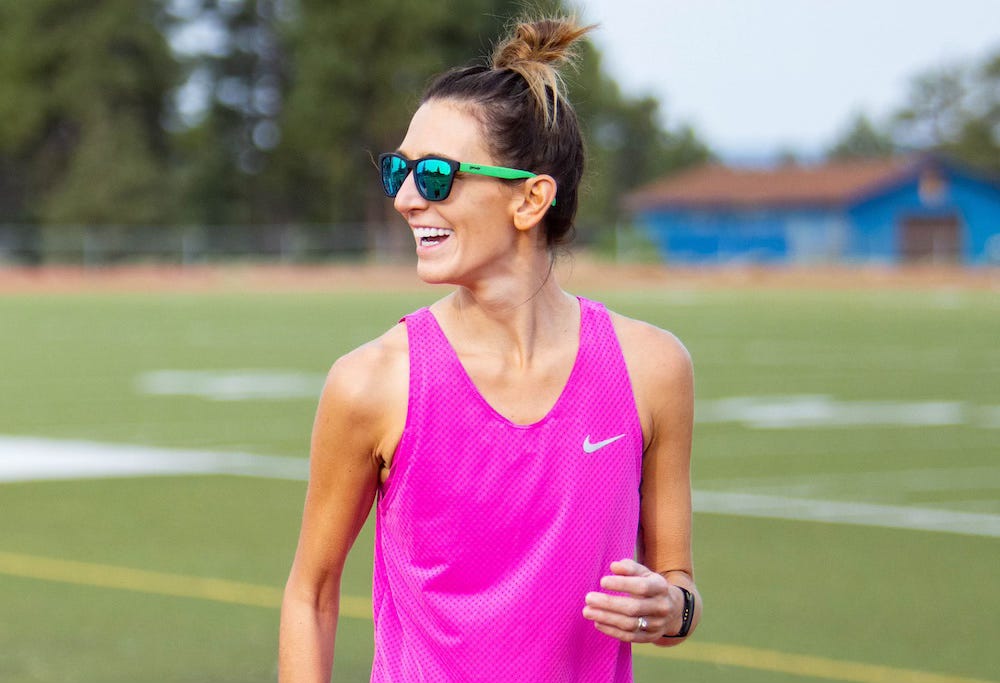
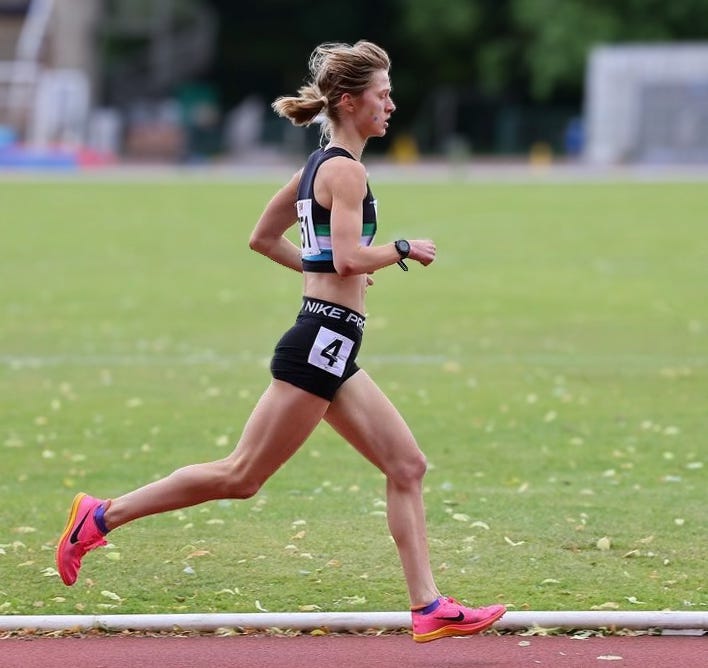
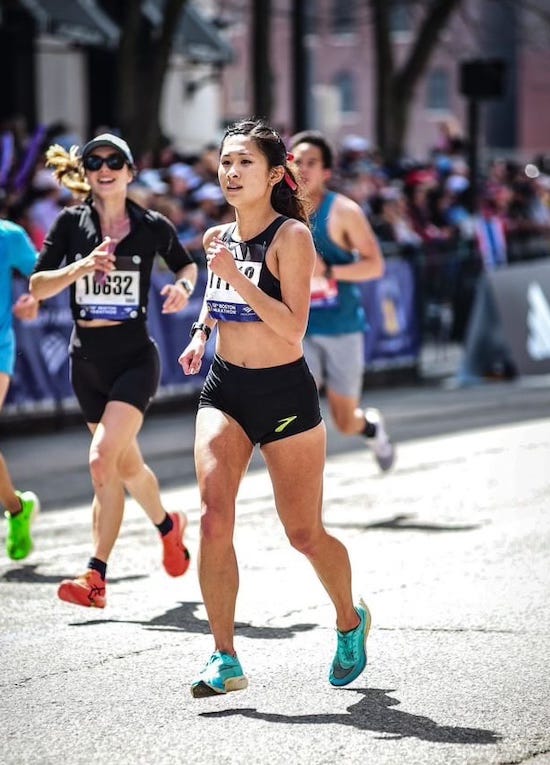
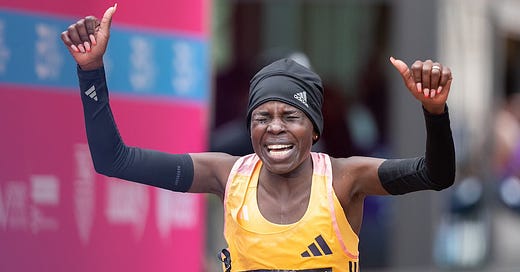

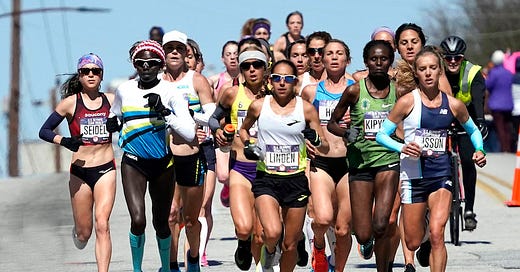

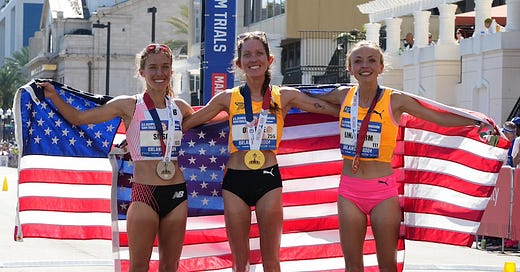

There are so many ways I can be more thoughtful. I appreciate your work on this subject, which will help me be a better person.
Superb article and well researched! Thank you - I’m an autistic athlete/runner now working with autistic people and to read this brings me joy as your language and up to date information is perfect. Thank you 🦄